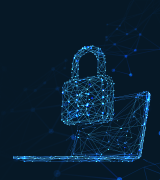Q3 2023 Threat Landscape Report: Social Engineering Takes Center Stage
Social engineering in its many forms took center stage in Q3 2023. The quarter saw “human hacking” evolve from a long-standing security challenge to threat actors’ method of choice. This was evidenced by our observations of the dramatic escalation of social engineering tactics, with significant increases in phishing, smishing, valid accounts, voice phishing and other tactics—adding up to the highest volume of incidents we have seen in 2023.
The increasing volume of social engineering attacks is matched by a broadening range of approaches, whether that is via phone and SMS as the group K2A243 (SCATTERED SPIDER) is known to abuse novel email phishing scams, or directly via Microsoft Teams using DARKGATE malware. As part of the rise in social engineering, business email compromise (BEC) continues to grow steadily in popularity, with both established and newer threat actor groups using a range of tactics to access data and, in some cases, ransom the information.
In our analysis of all types of cases handled by Kroll, the professional services sector continued to rank first in Q3, with a high concentration of this activity related to legal firms. We also observed nominal rises in the targeting of the construction and manufacturing industries compared with the previous quarter.
Our observations of malware for the quarter highlight some notable trends, including the fact that while the infamous QAKBOT malware has been disrupted, certain indicators suggest that its operators remain active.
Q3 2023 Timeline
Sector Analysis - Professional Services Stay in the Spotlight
In Q3, Kroll continued to see the professional services sector rank first across cases. Similarly to Q1, Kroll saw a high concentration of this activity related to legal firms, fueled by a rise in BEC across all sectors and specific campaigns targeting the legal industry, such as the BLACKCAT ransomware gang.
Kroll also observed nominal rises in the targeting of the manufacturing (2%) and construction sectors (1.5%) from the previous quarter. In Kroll’s observation, both sectors most frequently experienced BEC in the third quarter. For manufacturing, ransomware was the second most likely threat type to be observed, while insider threat was the second most likely threat type for construction. Manufacturing and critical infrastructure are often targeted by cybercriminals due to the potential to execute a catastrophic and high profile attack. The 2021 Colonial Pipeline ransomware attack is a key example of the potential dangers. Historically, the manufacturing sector has been a key focus for criminals as many businesses within the sector did not fully appreciate the size of their attack surface. While the industry is now better prepared to protect itself, the target on its back remains.
Most Targeted Industry by Sector - Past Three Quarters
Threat Incident Types
BEC continues to increase steadily in popularity. According to the latest Internet Crime Report from the FBI’s Internet Crime Complaint Center (IC3), businesses lost more than $2.7 billion due to BEC. In Q3, Kroll saw an uptick in events related to email compromise, fueling that threat to account for nearly 47% of cases during the quarter.
Most Popular Threat Incident Types - Past Three Quarters
Ransomware Variants – Q3 2023
Despite BEC taking center stage, ransomware remains an ever-present threat. While the total percentage of ransomware cases dropped in Q3 (-13.5%), the number of individual ransomware engagements was consistent with previous quarters. The most active groups observed in Q3 were LOCKBIT and BLACKCAT. Kroll also saw increases in activity around newer groups such as CACTUS, RHYSIDA and INC.
Top 10 Ransomware Variants – Q3 2023
Case Study: BLACKCAT Impacting Manufacturers
In one Kroll case during Q3, threat actors used valid credentials to log into the VPN services of a manufacturing company. In the month following the first unauthorized access, Kroll identified several suspicious logins where actors likely conducted network reconnaissance, at one point executing exfiltration via FileZilla. Nearly six weeks after the first malicious access, actors were observed returning to the system for a period of two days. During that time they used MegaSync to exfiltrate data, as well as tools such as Advanced IP Scanner for network discovery and MimiKatz for credential collection. Ultimately, the actors deployed the BLACKCAT payload as a new service creation. During access, actors exfiltrated nearly 600 GB of data which was later exposed on the threat actor site.
BLACKCAT Payload Attack Chain
Case Study: RHYSIDA Goes After Health Care Sector
Warnings issued in early August by multiple government agencies indicated that a new ransomware group, RHYSIDA, was targeting the health care sector. Changing trends in Kroll engagements mirrored this report in the third quarter. In one case impacting a large health care organization, actors accessed the system using compromised credentials (also known as valid accounts) coupled with a vulnerability in the client’s Citrix NetScaler environment. Shortly after access, the threat actors deployed SYSTEMBC, a Trojan malware that helps hide connections to a threat actor’s command and control (C2) infrastructure. The actors used multiple tools during the incident, including Advanced Port Scanner, for network discovery, AnyDesk for remote access and MegaSync for exfiltration. After files were successfully encrypted, the actors changed passwords to the system so that IT employees could not access the network.
Threat Actors Access Health Care Network via Valid Accounts
Social Engineering Yields Initial Access
Social engineering, or what many refer to as “hacking humans,” is a leading cause of network breaches and unauthorized access to remote systems. Kroll saw social engineering tactics increase dramatically in the third quarter, with significant increases in phishing (8%), valid accounts (9%) and voice phishing (vishing), as well as other tactics (3%).
This rise in social engineering activity aligns with multiple open-source reports warning about these types of attacks via Microsoft Teams and the rise of activity by the group KTA243 (SCATTERED SPIDER), which uses phone- and SMS-based social engineering tactics to lure users into exposing their credentials.
Top 4 Initial Access Methods - Past Three Quarters
Case Study: Fitness Subscription Phishing Putting People in a Spin
In Q3, Kroll observed a number of cases where individuals from professional services firms received a fake email stating that their subscription for a popular fitness membership service was starting, effective that day, and that their payment card would be charged automatically on a monthly basis. In several cases, recipients responded to these prompts either by email or by phone to indicate that they did not order such a subscription. From there, recipients were socially engineered to download a Zoho Assist—a remote support software session. Once access was granted, actors exfiltrated files and then demanded a financial ransom to avoid data publication.
Threat Actors Leverage Socially Engineering to Exfiltrated Data
Malware Trends and Analysis
Kroll actively tracks malware command and control infrastructure, submissions to public sandboxes and active incident response (IR) and managed detection and response (MDR) case data to generate lists of the most active malware strains for comparison.

Top 10 Malware Strains – Q3 2023
A marked difference from the findings shared in the Q2 Threat Landscape Report is the absence of QAKBOT in the top 10 malware list. This is because the FBI disrupted the infamous botnet in August. Kroll has been tracking QAKBOT for many years. Also known as QBOT, PINKSLIPBOT and QUAKBOT, it is typically delivered via malspam and has been observed using reply-chain thread-hijacking attacks for some time, in order to increase clickthrough rate. After consistent updates and new modules, QAKBOT was used as an initial entry vector for many ransomware groups, including CONTI, PROLOCK, EGREGOR, REVIL, MEGACORTEX and BLACKBASTA. It is estimated that the botnet has infected 700,000 machines worldwide.
QAKBOT distributors, notably KTA248 (TA577), often took breaks throughout the year, and distribution of the malware dropped markedly from mid-June. The FBI disruption essentially cut communication with the command-and-control infrastructure layers of the botnet and issued an uninstall command to infected devices.
Since the QAKBOT disruption, Kroll has observed a rise in relatively unseen malware strains, such as DARKGATE and PIKABOT, while other open-source stealer malware trends remain consistent. This indicates that QAKBOT operators are looking for a new initial access malware to deploy.
Kroll recently observed cases of DARKGATE malware being delivered to several organizations in the transportation and hospitality sectors through Microsoft Teams messages. This activity has also been highlighted throughout open-source reporting, sharing a number of key indicators with Kroll observations, such as common filenames, adversary infrastructure and similar domain name convention to host the initial download.
Stay Ahead with Kroll
Cyber and Data Resilience
Kroll merges elite security and data risk expertise with frontline intelligence from thousands of incident responses and regulatory compliance, financial crime and due diligence engagements to make our clients more cyber- resilient.
24x7 Incident Response
Kroll is the largest global IR provider with experienced responders who can handle the entire security incident lifecycle.
Cyber Risk Retainer
Kroll delivers more than a typical incident response retainer—secure a true cyber risk retainer with elite digital forensics and incident response capabilities and maximum flexibility for proactive and notification services.
Kroll Responder MDR
Stop cyberattacks. Kroll Responder managed detection and response is fueled by seasoned IR experts and frontline threat intelligence to deliver unrivaled response.
Penetration Testing Services
Validate your cyber defenses against real-world threats. Kroll’s world-class penetration testing services bring together front-line threat intelligence, thousands of hours of cyber security assessments completed each year and a team of certified cyber experts — the foundation for our sophisticated and scalable approach.
Data Breach Notification Services
Kroll’s data breach notification, call centers and monitoring team brings global breach response expertise to efficiently manage regulatory and reputational needs.
Ransomware Preparedness Assessment
Kroll’s ransomware preparedness assessment helps your organization avoid ransomware attacks by examining 14 crucial security areas and attack vectors.




